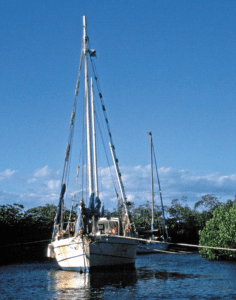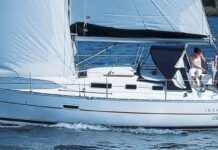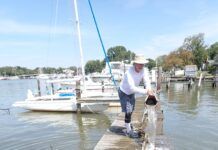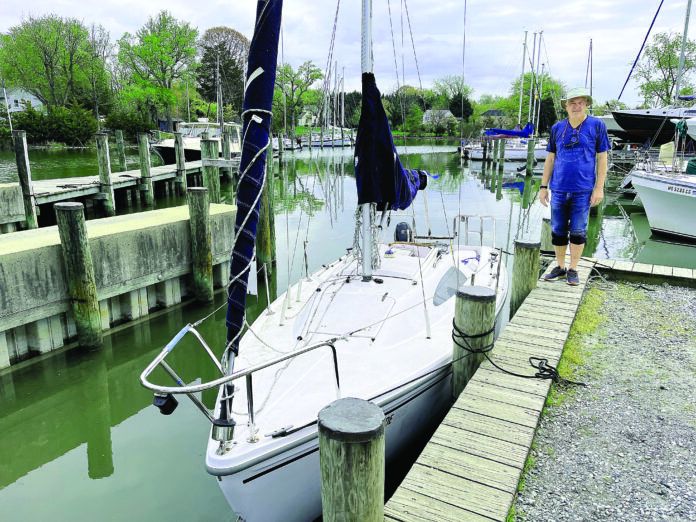A RESOUNDING CLARIFICATION
Regarding the blog post, “Reducing Boat Noise,” I wonder if this is correct: “The actual noise level in the cabin will depend on the distance between the engine box and the cabin; sound levels drop by 6 decibels each time you double the distance from the source.” Isn’t that the noise drop with distance in open air? In an enclosed cabin, you have resonant materials and sound reflection & reinforcement. You can move from a low resonance spot near the noise source to a high resonance spot farther from the noise source – in which case the noise level will go up, not down.
Les Biesecker
Catalina 22
Mayo, MD
You are correct, and we should have made that more clear. The 6 decibel ratio between distance and noise is only valid in open air, and was presented mostly to illustrate the nature of sound and the insulating properties of air. Moving away from a noisy engine can decrease perceived noise, but not when you are at the same time moving closer to bulkheads, tanks, or stoves that can also vibrate and resonate with the clatter and clank of the iron jenny.
LEAKY OUTBOARD CARB
I have an issue with one item in the “return to the dock list” – the “close the portable tank vent” (see “Before and After the Cruise Safety Checklist,” PS January 2020). If the temperature raises with the vent closed, the good chances are that the fuel will be forced out through the carburettor and eventually drip into the water. I have seen this happening. This is especially bad if the outboard motor is a two-stroke – the fuel will evaporate in the hot weather, but the oil won’t.
Marek Dziedzic
Via PS Online
We have never experienced this, on several boats and many years. In most common installations the carburetor is not impacted by pressure in the portable tank as there are two or more valves between the tank and the carb. For instance, there is the fuel shut-off valve that would prevent pressure build-up in the tank from reaching the carb. Even if this valve were left open, the needle valve in the carburetor should hold back any gas (the pressure of the tank is less than that of a good fuel pump).
Nevertheless, there are also a few proven options to provide additional assurance that the pressure from the tank does not reach the carburetor:
1. Rebuild the carb, including a new needle valve, which should easily hold back any pressure generated solely through expansion.
2. Install a ball valve in the fuel line between the tank and the engine.
3. And finally, the answer you’ll likely get from your mechanic: Add a fuel demand valve. Like a scuba demand regulator, it only releases gasoline when there is a slight suction on the motor side.
If you decide to leave the vent open, you are opening the door for moisture to be absorbed into the gasoline, bringing on carb corrosion and contamination that can plug up the fuel system.
Alternatively, you could install a silica gel vent filter (see “EPA Mandate Sparks Fuel Vent Filter Test,” PS April 2020), but this is overkill for a portable tank. I would go with the in-line fuel valve if I had this problem.
NEW FUEL TANK SATISFACTION
Regarding your blog post on fuel contamination (see the Inside Practical Sailor blog post, “Defeating Bacteria in Your Diesel Fuel,”), after numerous attempts and considerable expense to purge fuel tank, including polishing fuel, I replaced the tanks. These stainless steel tanks were 20 years old and the weld around the fill tube showed considerable signs of rust. My new 3/16-inch 5052 aluminum tanks included an inspection port to allow periodic checks and power washing as needed. The best plan is to follow the ounce of prevention adage. I’ve seen a night and day difference in engine performance.
Joe Petner
Phoenix 29, Three Belles
Fairhaven,MA
Our report on tank replacement weighs the pros and cons of different materials. Whichever material you choose, the addition of inspection ports that allow access to all parts of the tank can simplify maintenance over the long run (see “Diesel Fuel Tank Replacement,” PS May 2007).
PROP SPEED VS. BARNACLE BARRIER
Regarding your blog post on propeller paints (see “Propellor Paints Versus Barnacles,” Inside Practical Sailor blog), I sail in Georgia and Florida and keep my Catalina 310 in St. Simons Island, GA. The waters here are very demanding due to strong currents and high temperatures and the boat stays in the water year round for 2-3 years between bottom jobs. Only a high copper ablative paint and monthly diving and cleaning keeps the bottom in good shape. I have used Prop Speed with very good success because the barnacles will fly off under use but during my recent bottom job it had to be reapplied due to it having been scraped off partially. But we could not get it in a timely manner due to supply chain issues so instead tried Petit Barnacle Barrier on prop and shaft. After 3 months and 2 dives it appears to make the barnacles easy to remove. The diver can flick them off with little effort but it does not seem to prevent them adhering like Prop Speed. Unsure yet if they will come off during use under power. As of now I will likely return to Prop Speed in 3 years during the next bottom job but will monitor performance between now and then.
Bob Keller
Catalina 310
St. Simons Island, GA
THE BOX FAN SOLUTION
By far, the best, simplest, and cheapest way to really move air through a sailboat (with access to 120V power) is to buy a cheap 22” x 22” box fan (at Walmart, for instance, for $20 — the size that fits in a home window — and fills the hatch opening). Lay it on the forward hatch opening — blowing out — and turn it on. The volume of air it sucks through the boat is incredible.
Mike Hedge
via PS Online
We are big fans of the box fan for inexpensive ventilation. Moving about 2,000 cubic feet of air per minute, a box fan can be especially useful to move fresh air through the boat when working with cleaners, paints, or solvents that require good ventilation and/or a respirator (see “The Best Respirators for the Boatyard” PS September 2017). We recently designed a box-fan filter for our workshop (see “Making Your Own Workshop Filter, PS June 2022). For a smaller 12-volt version of the box fan, there is the Fantastic Vent Endless Breeze fan, which moved 520 cubic feet per minute of air in our testing, but consumed about 2.5 amps, more than four times that of a small cabin fan (see “Windy Ways: Practical Sailor Whips Up a 12-volt Cabin Fan Test,” PS April 2008).
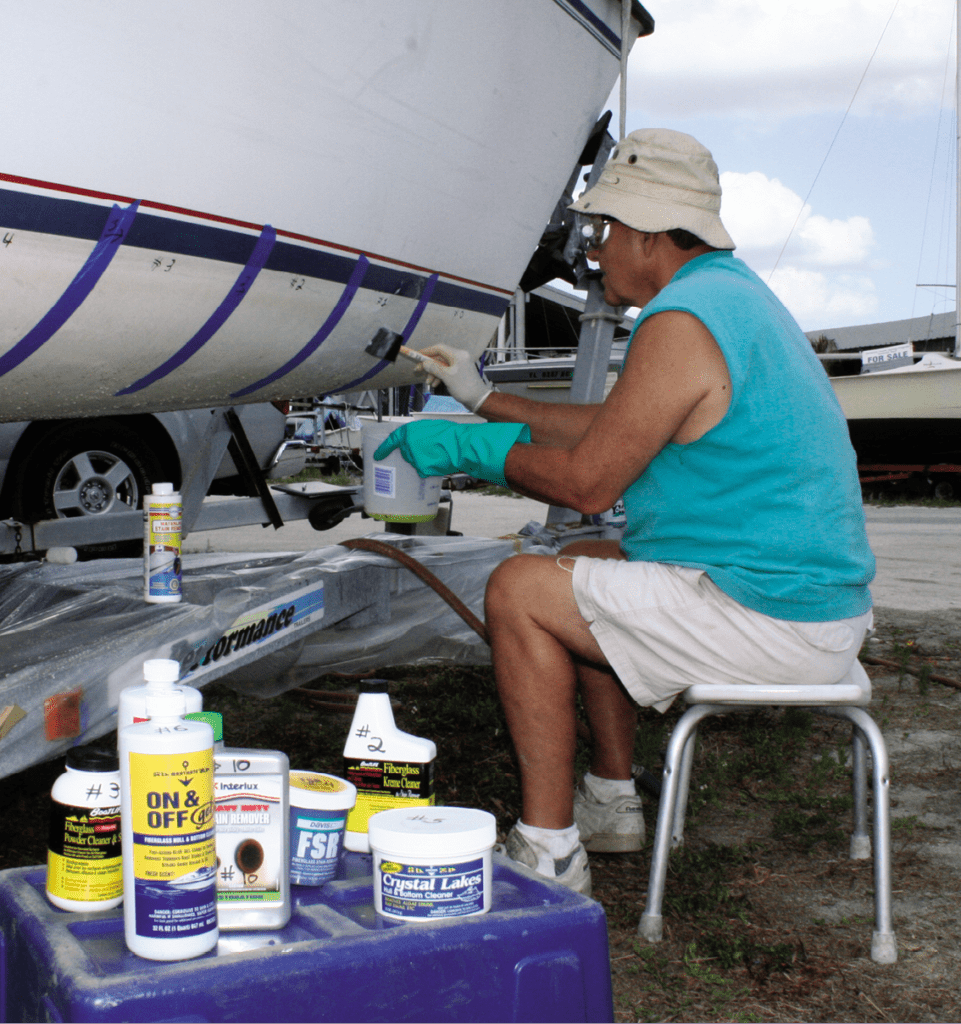
DILUTING ON AND OFF
I have found that On & Off doesn’t need to be used full strength to be effective. One part to 10 parts water works just fine and applied with a brush. Roller or sponge application probably good as well, maybe better, but haven’t tried. Brush on and sit for a few minutes then hose off. This is much more economic, and more environmentally friendly.
Greg Waller
Grand Banks 46, Rumaway
Key West, FL
POWERLINES ON RESERVOIRS
I sail on Lake Conroe, Texas. There is a power line crossing the lake. I researched the National Electrical Safety Code (NESC) vertical clearance guidelines for powerlines. However, the guidelines are not that clear as to what water level (pool elevation, spillway elevation, top of spillway elevation, crest of dam elevation, or the maximum design water surface area elevation) they use to determine the air gap (vertical clearance). I contacted the powerline company and they didn’t know either. They would have to measure it. I have been trying to get them to do it but no luck so far. My question is do you have an answer on what elevation they use. I understand the air gap measurement and water depths when talking about water bodies where there is a tidal change but no clear on what is used in a lake. As a registered Professional Engineer, I know what elevation I would use, but that might not be what they used.
Via PS Online
Bob Lenhart, P.E.
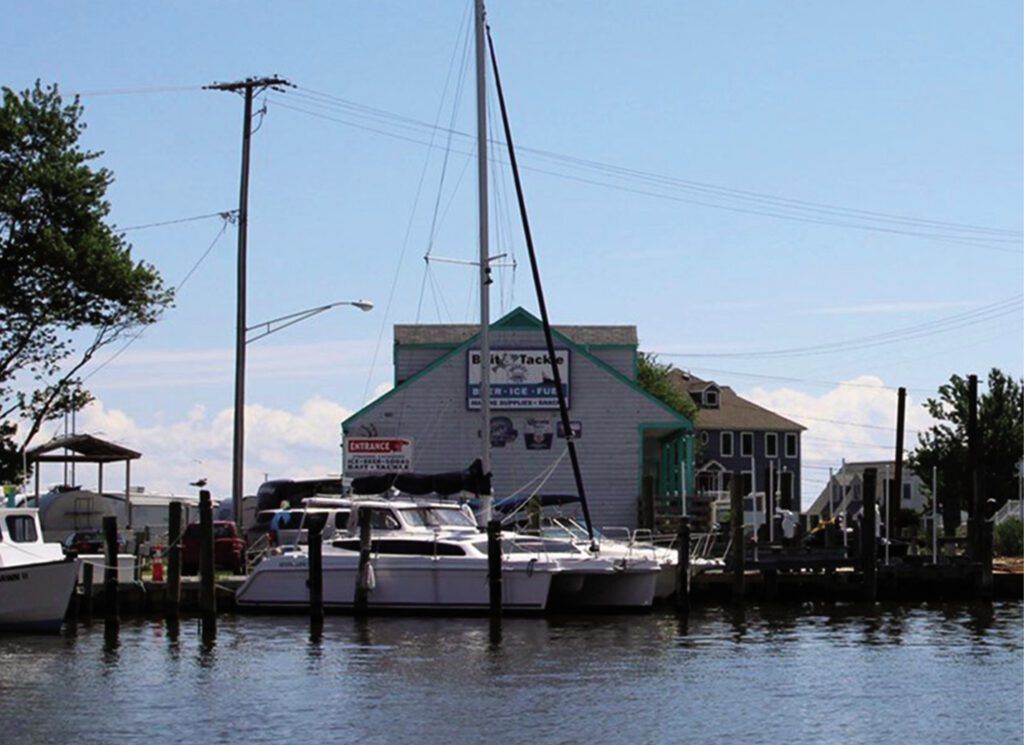
You ask an important question, so excuse us for our long-winded response, which repeats information you’ve likely already uncovered on your own. First, an important caveat: The example below, which demonstrates the many challenges in calculating minimum safe clearance under the powerlines on Lake Conroe (where we’ve never been), is for illustrative purposes. Sailors should absolutely confirm the height and the baseline lake height with the local regulatory bodies, and verify there has been a recent physical measurement confirming that height—or take your own. Because Texas law requires a minimum height for these powerlines, the power company and local agency that granted the easement should know the minimum height and the reference baseline.
To confirm the height yourself, you could use a specialized calibrated laser range finder or drone, but these are expensive (~$1,000), and can yield inaccurate results, even in the hands of some professionals. You might consider using a photo of a sailboat of known mast height (one that can safely pass under the powerlines, of course) to calculate the true height at the water stage when the photo was taken. Like most reservoirs, Lake Conroe’s level is monitored daily and the lake level is posted online.
The example below is presented mostly to demonstrate why US sailboat owners need better information to keep them safe around powerlines. Charts do not provide good data, and in many cases, even marinas and boat ramps that lie adjacent to potentially dangerous powerlines do not provide reliable information. And as you indicate, even the baseline that regulatory agencies use for measuring powerline height are unclear or inconsistent.
Like powerlines throughout the U.S., those crossing Lake Conroe are regulated by a state law that stipulates compliance with the NESC minimum height guidelines. For lakes, the minimum height varies by the size of the water body and type of boating. (There are higher required clearances for navigable rivers and lakes controlled by the Army Corps of Engineers).
The following are the NESC minimum clearance requirements for land or water areas that are posted for rigging or launching sailboats:
• If the surface area is less than 20 acres, the minimum clearance is 25.5 feet;
• If the surface area is between 20 and 200 acres, the minimum clearance is 33.5 feet;
• If the surface area is between 200 and 2,000 acres, the minimum clearance is 39.5 feet; and
• If the surface area is over 2,000 acres, the minimum clearance is 45.5 feet.
Lake Conroe, at 19,640 acres, would require a 45.5-foot clearance for sailboats. However, areas that are not considered to be feasible for sailing must abide by only a 40-foot clearance for powerboats. Given the location of the powerlines on Lake Conroe (across two narrow finger-like coves), as a safety precaution, we’d assume the lower, 40-foot height minimum for powerboats, even though two marinas and a boat ramp accessible to sailboats are located in one of the coves.
Remember, the 40-foot clearance is the actual physical height and does not account for arcing current, which can jump several feet to conductors like a sailboat mast. The distance it can reach depends on the voltage, humidity, and other environmental factors.
Based on satellite photos of the powerline support towers, we assume that the lines spanning Lake Conroe are rated somewhere between 200 and 350 kV, but you will need to confirm this with the power company or regulatory body. Like you, despite phone calls and emails to the San Jacinto River Authority, which has limited jurisdiction over Lake Conroe, we were unable to confirm the actual height or voltage of the powerlines over the lake.
According to the minimum safe clearances established by the Occupational Safety and Hazards Agency for powerlines carrying between 200 and 350 kV, you must stay 20 feet away from the conductor to avoid arcing current. Again, this exercise is for illustrative purposes only, and we have not confirmed the voltage in the Lake Conroe powerlines.
As for your main question: What baseline lake level did the power company use to calculate the air gap on a reservoir? By state law it should have followed NESC rules. According to NESC Ground Clearance to Midspan Rule 232B1, “for controlled impoundments the surface and clearances shall be based on the design high water levels [our italics].” Note, however, that the midspan rule is not uniformly applied, nor is there much oversight.
In 2017 three teenage Boy Scouts were killed when their sailboat hit a powerline on Lake O’ the Pines, about 200 miles south of Lake Conroe. Investigators found that the powerline was several feet below the required midspan height.
According to the Texas Water Development Board (www.waterdatafortexas.org) Lake Conroe’s design high water level is 207 feet above sea level established by the National Geodetic Vertical Datum of 1929. (All heights below refer to NGVD 1929, one of five common baselines for sea level used in the U.S.). However, the San Jacinto River Authority, which regulates Lake Conroe, frequently uses the “full pool” level of 201 feet above sea level as a basis for other regulations. According to a spokesperson at the SJRA, the lake is closed to boating when it reaches 203 feet.
If the power company used Lake Conroe’s design elevation to calculate the powerlines’ height, the wires’ minimum height would be 247 feet above sea level (207+40=247). To be on the safe side, however, we’d use the SJRA’s lower “full pool” level of 201 feet, giving the wires an altitude of 241 feet above sea level, or 40 feet above the full pool level (201+40 = 241).
The lake level on the day we checked was 199.3 feet above sea level NGVD (1.7 feet below the full pool level). Assuming the 40-foot clearance, that puts the live wires at slightly higher than 42 feet above the lake level on that day, allowing safe clearance for boats with 22-foot masts or shorter. For context, our old 14-foot O’day Javelin had a mast height of approximately 22 feet. This does not take into effect the additional line sag in humid or hot conditions and when power loads are high.
Bottom line: The US needs more uniform standards for measuring and posting safe powerline clearances for sailboats. For now, it’s up to boaters to do their research, and, when possible, their own measuring.
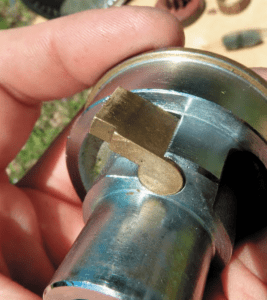
GEAR CHECK
STORM PREP
